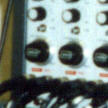
The excitation point, control points and damage location for a cross-ply graphite/epoxy composite plate
Damage index at the control points


 |
Automated Structural Health Monitoring System Using Acoustic Emission and Modal Data Download Poster Development of efficient methodologies to determine the presence, location and severity of hidden damage in critical structural components is an important task in the design and construction of structural health monitoring systems in aging as well as new structures. In this study a methodology for automatic damage identification and localization is undertaken. The structure is assumed to be instrumented with an array of actuators and sensors to excite and record its dynamic response, including vibration and wave propagation effects. In the vibrational approach, the data consist of the modal response of the structure produced by the actuators while in the wave propagation approach they are the broadband signals due to ultrasonic waves propagating in the structure. Both types of signals are affected by the presence of defects. To determine the type and location of an unknown defect, a set of damage correlation indices is introduced from the frequency response function (FRF) of the dataset. Using the initial measurements or calculations performed on an undamaged structure as baseline, the damage indices are evaluated from the comparison of the frequency.response functions of the damaged structure. The methods are applied to simple structural models involving beams and plates with defects in the forms of cracks and holes. The relative effectiveness of the methods is examined for a variety of boundary conditions and sensor locations relative to the defects. |
The excitation point, control points and damage location for a cross-ply graphite/epoxy composite plate
Damage index at the control points
|